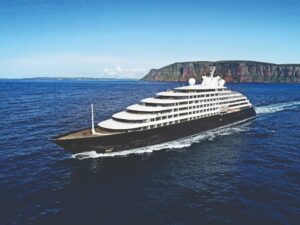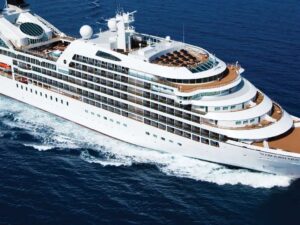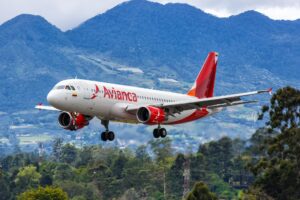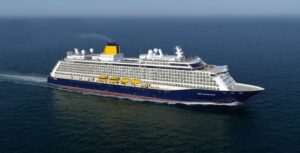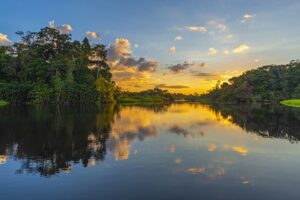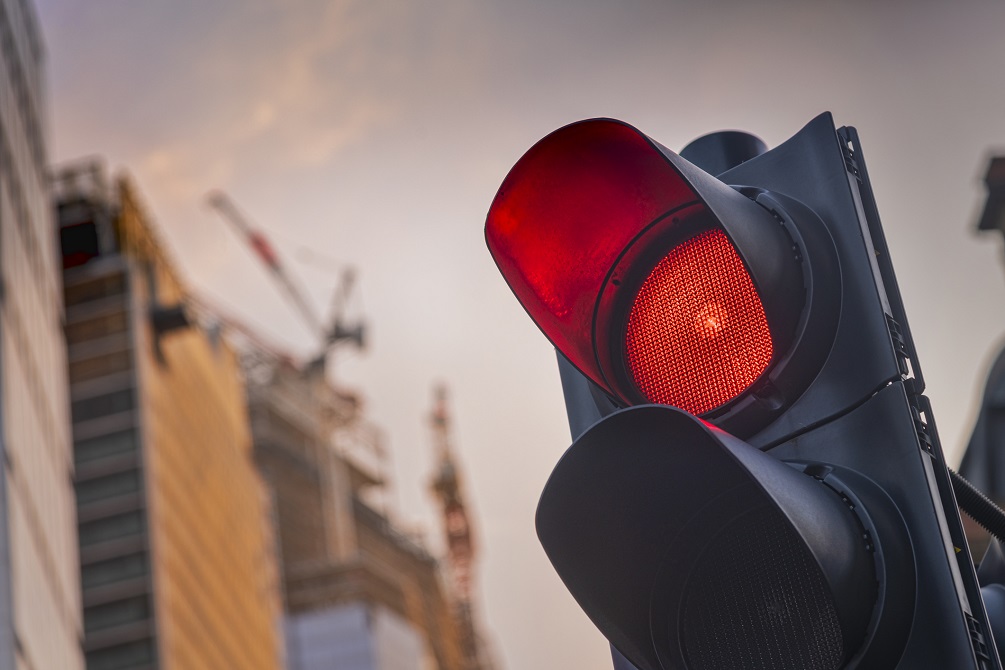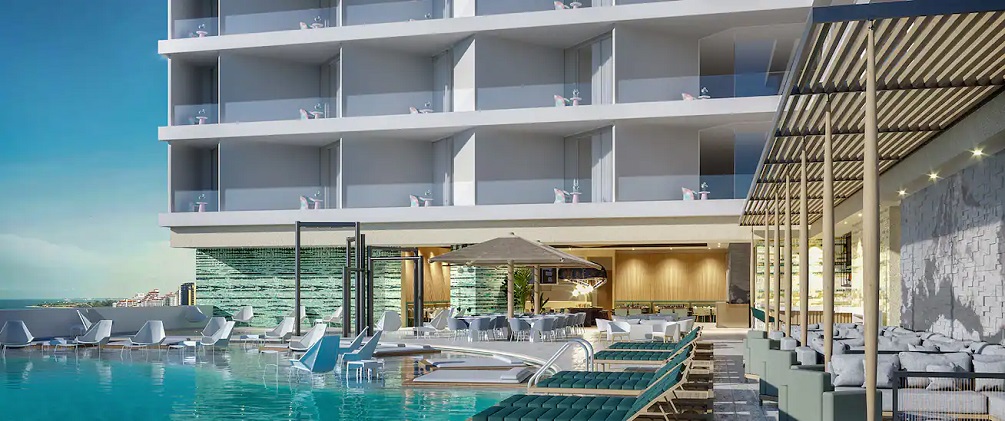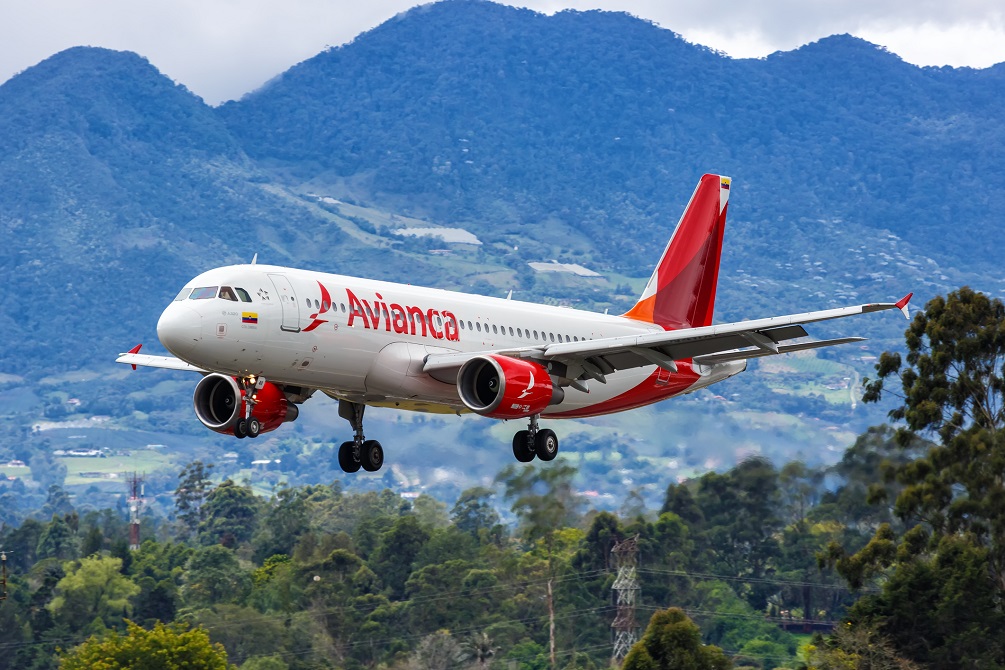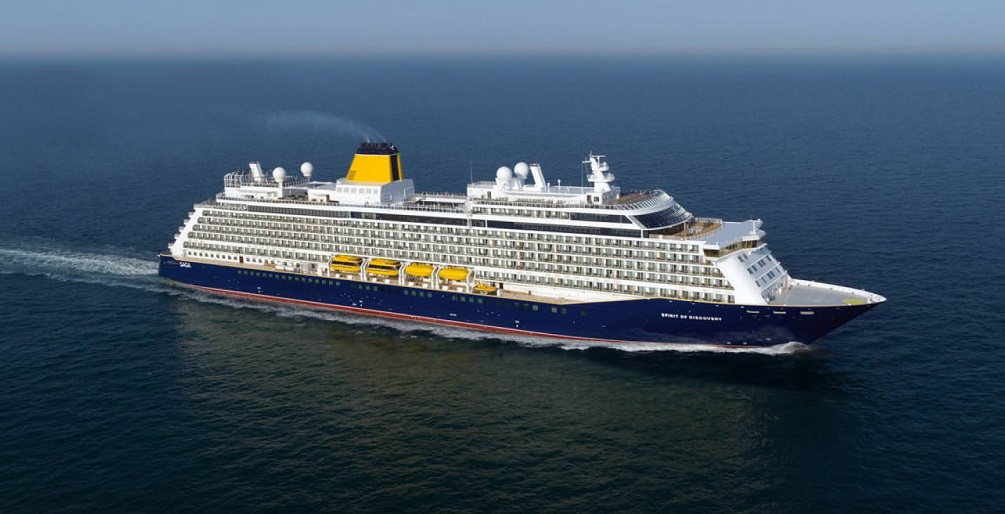Colombia
Vibrant culture, divergent landscapes, and the delightful cuisine of Colombia create an unmissable fusion fit for remarkable memories.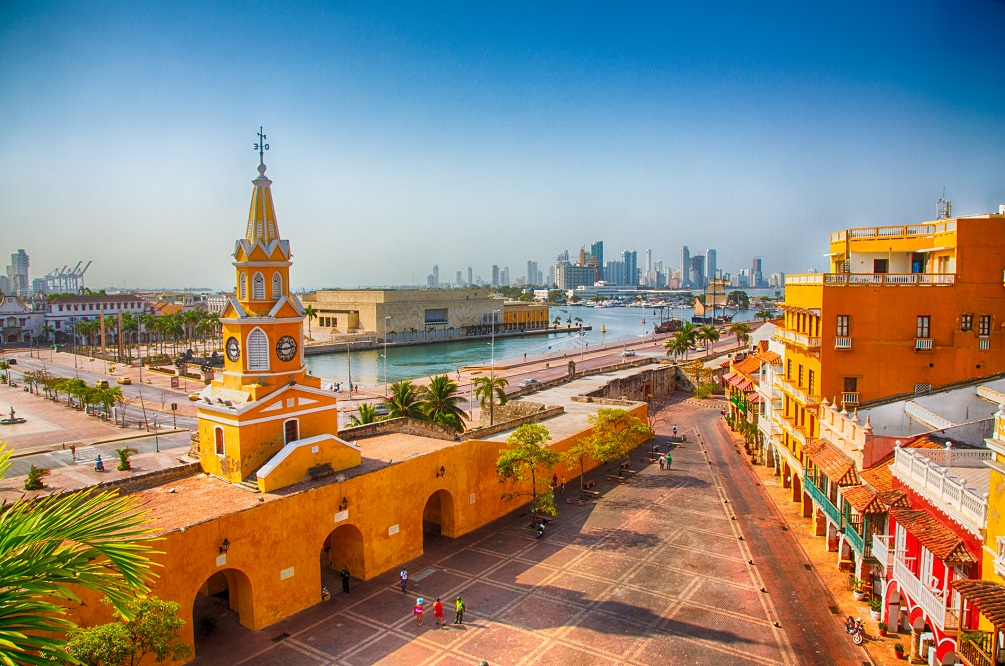
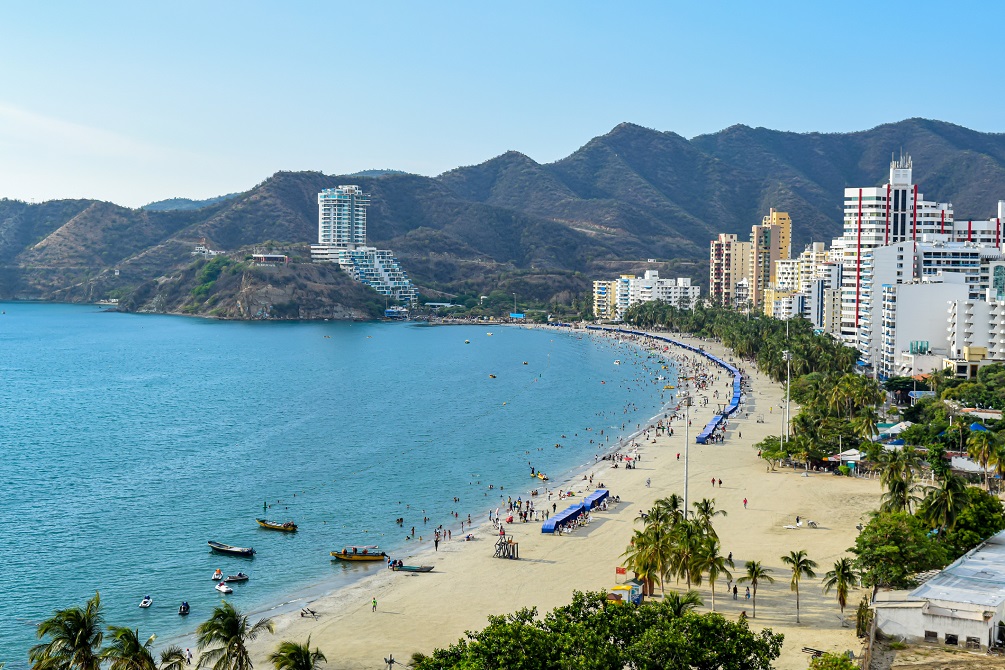


Colombia lies in the northwestern region of South America, right at the southernmost point of the North American landmass.
Two bodies of water lie along Colombia’s north and western border: the Caribbean Sea and the Pacific Ocean, respectively. In the northwest, nestled between the Caribbean and the Pacific, is Panama.
Colombia shares its eastern border with Brazil and Venezuela, while Peru and Ecuador are its neighbors in the south.
The San Andrés y Providencia archipelago forms part of Colombia. The group of islands is located off the coast of Nicaragua in the Caribbean Sea, about 650 Km (400 miles) northwest of the mainland.
The Andean chain of mountains extends through Colombia in the west, from Ecuador to the Caribbean Sea and Venezuela.
The interior highlands are the most populous region where Colombia’s largest cities (Medellín, Bogotá, and Cali) are located.
Steep and pronounced bays, inlets, and capes characterize the beaches along the Caribbean Sea and the Pacific Ocean. These areas feature sandy beaches, barrier islands, and brackish lagoons.
The major port cities of Barranquilla and Cartagena lie on the Caribbean low plains where a vibrant Carnaval takes place, and the weather is constantly pleasant for beach activities.
The Pacific coastal plains are sparsely populated.
The eastern lowlands are split into two geographical regions: the Amazon’s northern pinnacle and a savanna lying between the Andes and the Orinoco River. Many rivers spread through these areas as well.
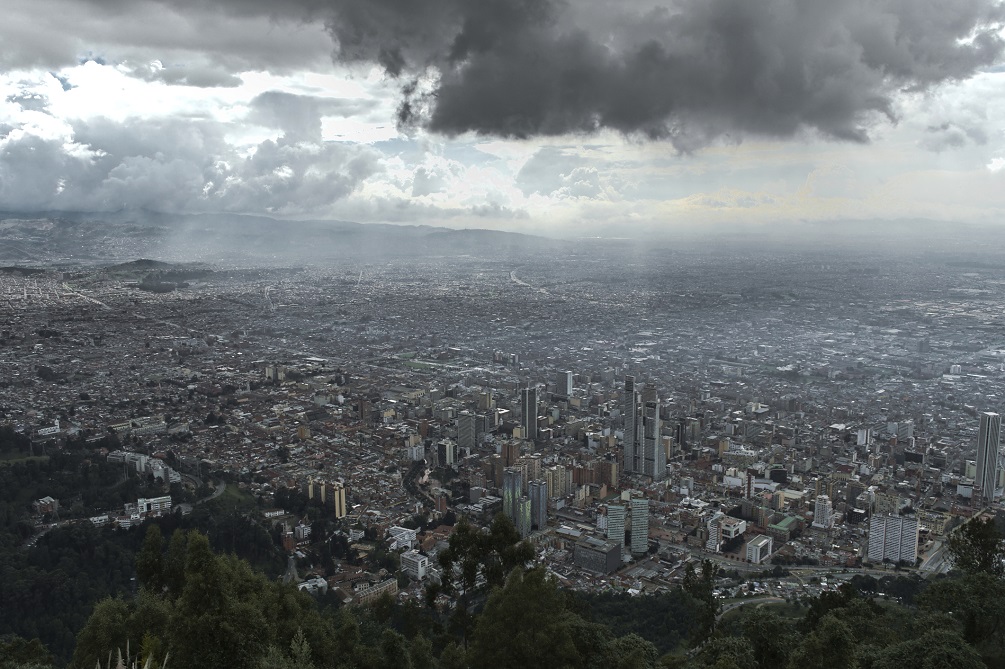


Colombia has a tropical climate modulated by changes in altitude, temperature, humidity, wind, and rainfall.
There is a range of climatic zones, including those unique to mountainous, forested, savannah, and desert landscapes.
The Pacific, the San Andres archipelago, and the Caribbean coast have a toasty climate with temperatures above 24°C (75°F). The weather is always ideal for beach and water activities like humpback whale encounters and scuba diving.
While attending the Cali fair or the Festival of Flowers in Medellín, one will be treated to a temperate climate. Temperatures fall within the range of 17 °C (62°F) and 24 °C (75°F).
A colder climate is characteristic of cities like Bogotá, the home of the renowned Museum of Gold. Temperatures range anywhere from 12 °C (53°F) to 17 °C (62°F).
The Andean moorland in the west is much colder, but it’s best for nature hikes.
The temperature drops to freezing above thirteen thousand feet, creating a glacial climate marked by permanent snow and ice.
There are two seasons in Colombia: dry and wet. The dry seasons run from December to January and July to August. From April to May and October to November, the wet season prevails.
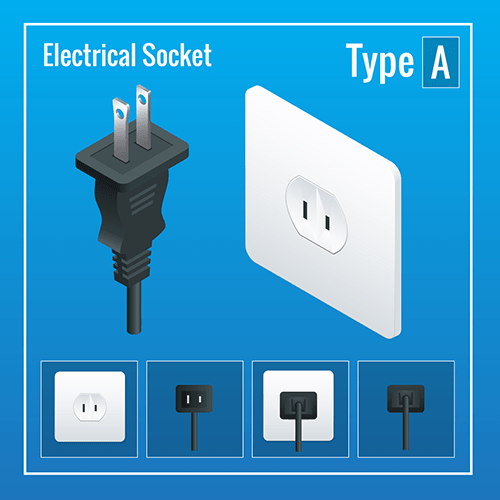


The plugs and sockets in Colombia are Type A (thin with two flat prongs) and Type B (circular with two flat and one round prong).
The typical voltage is 110V and the standard frequency is 60 Hz.
You can bring along a universal adapter and a voltage converter or pick one up from a local hardware store.
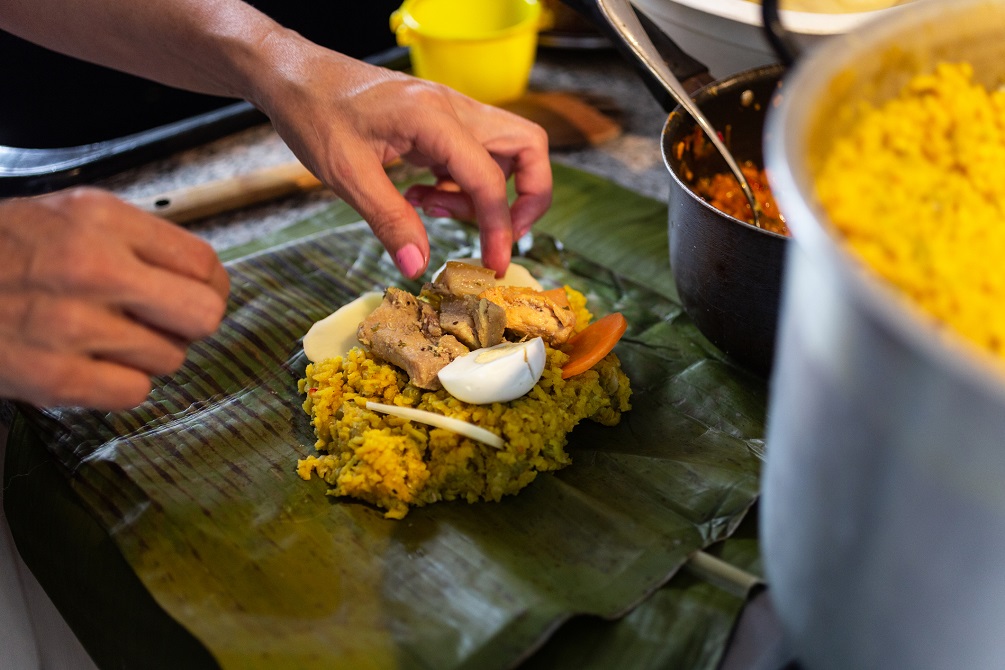


The culinary traditions of the ethnic groups living within the country have influenced Colombian gastronomy.
Also, Colombia’s geographical diversity creates cuisine that includes a wide range of ingredients.
Dishes typically include rice, potatoes, cassava, beef, chicken, fish, and seafood.
Dragon fruit, granadilla, papaya, and passionfruit are some of the tropical fruits featured in Colombian cuisine.
Tamales (a corn-based dough filled with meats or beans and cheese), lechona tolimense (a traditional meal of whole pork stuffed with rice, peas, and spices), and fish dishes like mojarra are some typical main meals of Colombia.
Popular snacks include empanadas (turnovers stuffed with cheese or beef), arepas (corn cakes), and aborrajados (deep-fried plantains stuffed with cheese).
To indulge your sweet tooth, try out bocadillo (a dessert made with guava pulp) and esponjado de curuba (Curuba sponge cake).
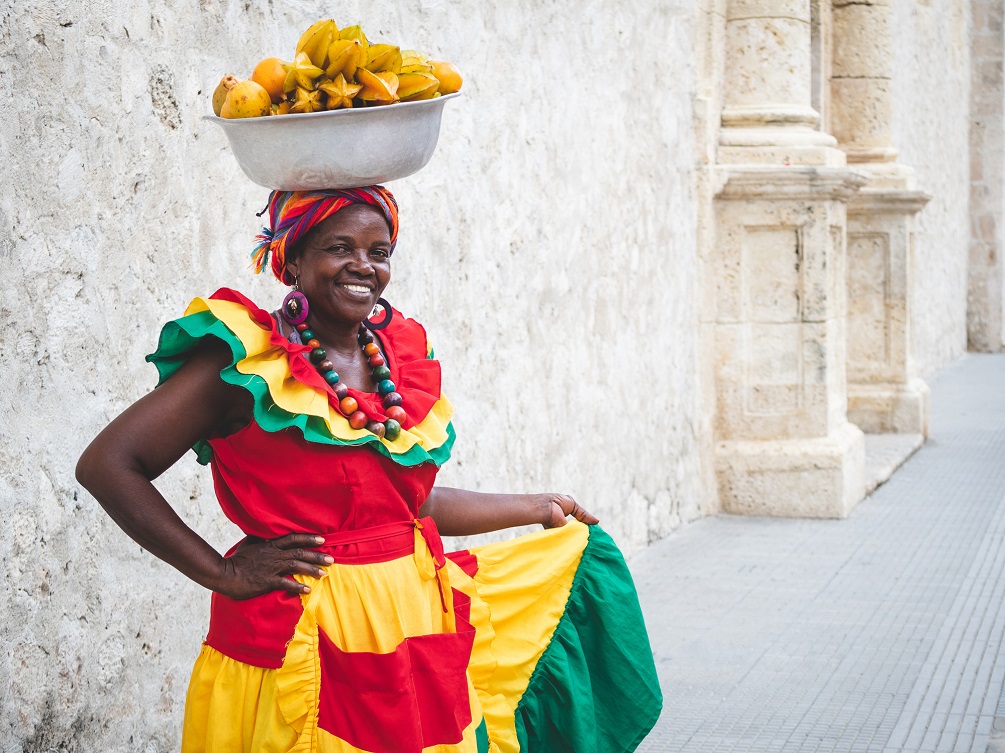


Colombia’s varying climates dictate different dress codes per region, but the general guiding principle is that you must dress for comfort and a tropical climate.
Bring along light breathable garments, pants that reach your ankles, and shirts that cover your shoulders.
When traveling to cooler areas, pack a jacket or jersey. Alternatively, dress in layers to peel off clothes as the day gets warmer.
In larger cities, dress smart-casual. It’ll be much appreciated by locals. Avoid shorts, flip-flops, and tank tops.
On beaches, you can wear whatever swimwear you please.
When visiting religious and government buildings, ensure you dress modestly.
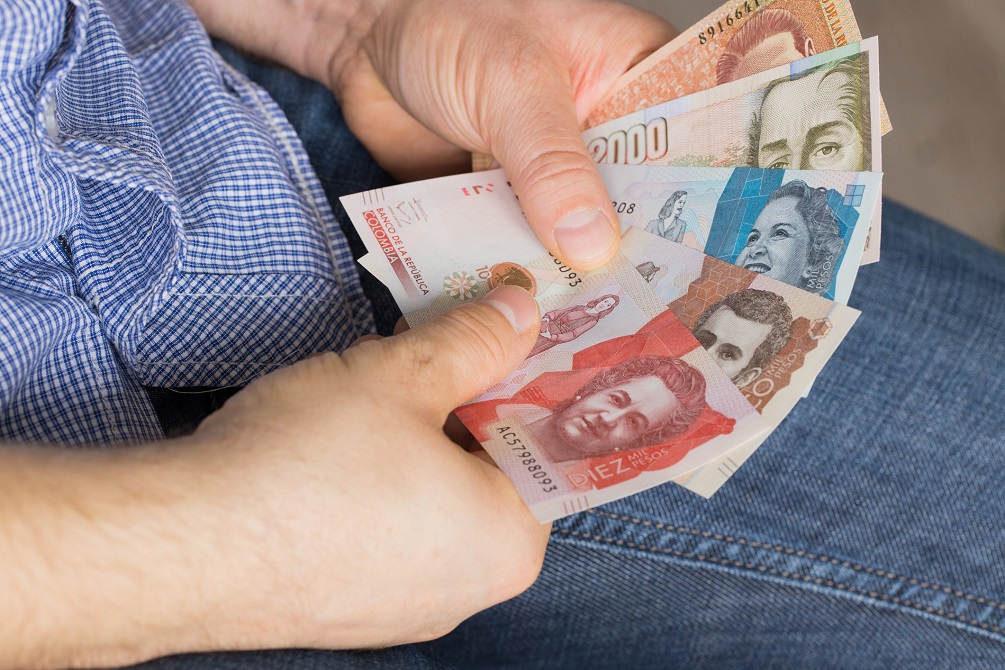


The Colombian Peso (COP) is Colombia’s official local tender.
Banknotes come in denominations of 1,000, 2,000, 5,000, 10,000, 20,000, 50,000, and 100,000 pesos and coins in 50, 100, 200, 500, and 1,000 pesos.
In major cities like Bogotá and Cartagena, you can pay for purchases with cash or your credit or debit card. Those on the Visa and MasterCard network are the most widely accepted.
Ensure that you inform your bank of your travels to Colombia. This will prevent them from freezing your cards for suspicious activity.
ATMs are widespread in Colombia, and you can use them in English. Those on the MasterCard, Maestro, and Visa network are the most common. Make any withdrawals early in the day and from an ATM inside a bank branch.
If you are traveling with a traveler’s check, it’s likely that banks will only process those in US dollars. Therefore, it would be wiser to rely on your prepaid, debit, or credit card.
Spanish (Castilian) is the official language of Colombia spoken by over 99% of the population.
Unlike its European and South American relatives, Castilian Spanish has pronunciations and vocabulary unique to Colombians, but it’s the easiest to understand.
There are 180 minority indigenous languages in Colombia.
English is the official language of a select number of places namely, the archipelago of San Andrés, Providencia, and Santa Catalina. In other parts of the country, including major cities, it’s unlikely that you will find many fluent English speakers.
To have an easier time navigating Colombia, it’s wise to learn basic Spanish words and phrases. Here are a few Spanish terms and sayings to get you started:
- Hello/hi – Hola
- Good morning – Buenos días
- Good afternoon – Buenas tardes
- Good evening – Buenas noches
- Bye (informal) – Chao
- Goodbye (formal) – Adios
- Yes/No – Sí/No
- Thank you – Gracias
- Please – Por favor
- Where is…? – Donde está…
- How much? – Cuánto vale/Cuánto cobra/Cuánta cuesta?
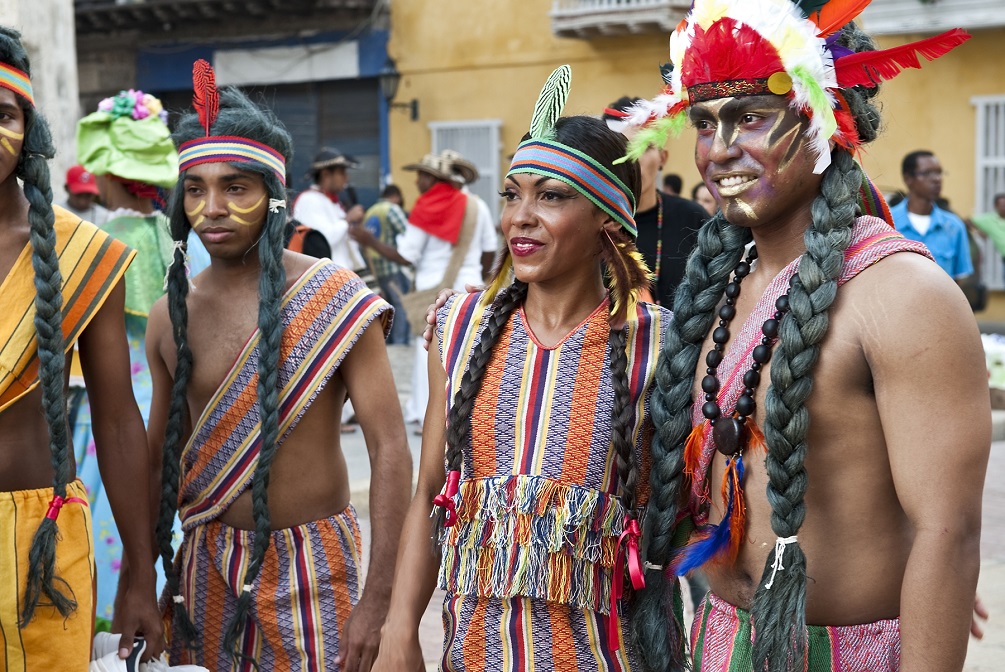


The cultures of Latin America, Spain, America and its indigenous peoples, the Middle East, Africa, and the Caribbean have influenced modern Colombian traditions.
This influence came about because of Native American civilizations within the country, European settlers, enslaved Africans, and immigrants from Europe and the Middle East.
About 90% of Colombians regard themselves as Christian, with a large majority Roman Catholic and a minority population Protestant. There are smaller communities of Jews and Mormons, amongst other religious groups.
Colombians love to dance and their music scene is both dynamic and diverse, giving rise to renowned musicians like Shakira.
Colombia is home to Nobel laureates, such as Gabriel García Márquez, who won the prize for his masterpiece One Hundred Years of Solitude.
Colombia’s national sport is Tejo, but football is the most popular.
Colombians are warm and welcoming towards foreigners. They consider it good manners to offer food to guests so if someone invites you for a meal, accept the invitation.
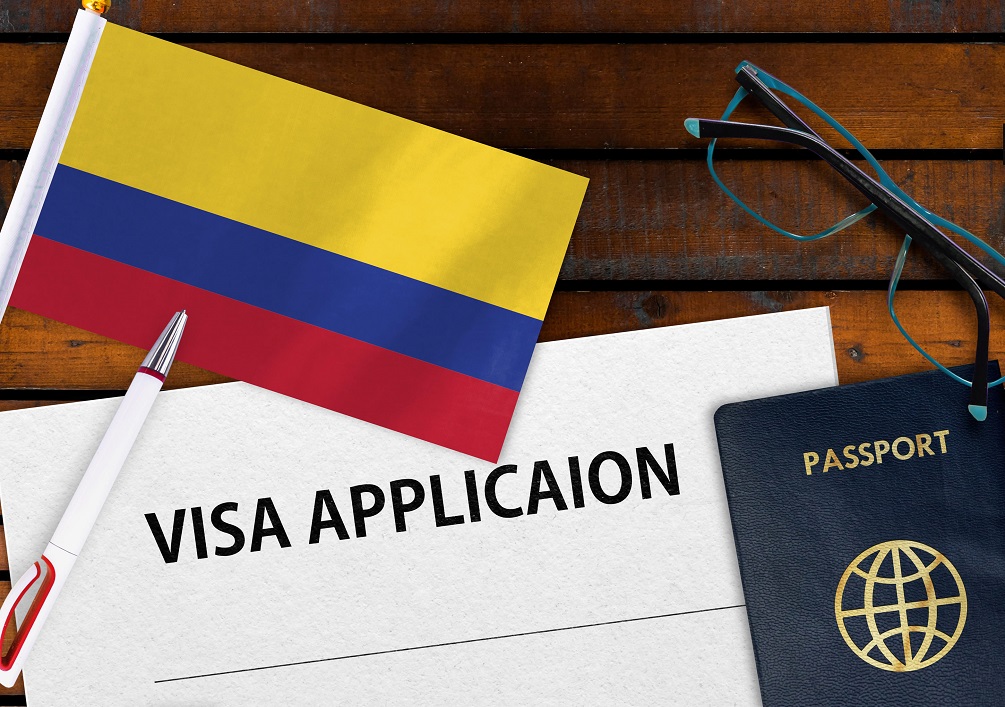


British nationals can enter Colombia without a passport for stays of up to 90 days.
It’s at the discretion of a Colombian Immigration Officer to issue you a visa, and you may have to provide proof of an outbound ticket.
To remain in the country for over 90 days, you must register the visa you receive either online or at the Migración Colombia office within 15 days of entering Colombia. You can extend your stay to 120 days, with a maximum of 180 days allowed in a 12-month period.
Overstaying your visa will result in a fine or deportation.
Passports must have a minimum validity of six months from the date of entry into Colombia.
Ensure you get a stamp at immigrations when entering Colombia through a land port.
You must purchase a tourist card when visiting the islands of San Andres, Providencia, or Santa Catalina from the airport. Exemptions apply for children younger than 7 years and if you are staying for less than 24 hours.






Colombia lies in the northwestern region of South America, right at the southernmost point of the North American landmass.
Two bodies of water lie along Colombia’s north and western border: the Caribbean Sea and the Pacific Ocean, respectively. In the northwest, nestled between the Caribbean and the Pacific, is Panama.
Colombia shares its eastern border with Brazil and Venezuela, while Peru and Ecuador are its neighbors in the south.
The San Andrés y Providencia archipelago forms part of Colombia. The group of islands is located off the coast of Nicaragua in the Caribbean Sea, about 650 Km (400 miles) northwest of the mainland.
The Andean chain of mountains extends through Colombia in the west, from Ecuador to the Caribbean Sea and Venezuela.
The interior highlands are the most populous region where Colombia’s largest cities (Medellín, Bogotá, and Cali) are located.
Steep and pronounced bays, inlets, and capes characterize the beaches along the Caribbean Sea and the Pacific Ocean. These areas feature sandy beaches, barrier islands, and brackish lagoons.
The major port cities of Barranquilla and Cartagena lie on the Caribbean low plains where a vibrant Carnaval takes place, and the weather is constantly pleasant for beach activities.
The Pacific coastal plains are sparsely populated.
The eastern lowlands are split into two geographical regions: the Amazon’s northern pinnacle and a savanna lying between the Andes and the Orinoco River. Many rivers spread through these areas as well.



Colombia has a tropical climate modulated by changes in altitude, temperature, humidity, wind, and rainfall.
There is a range of climatic zones, including those unique to mountainous, forested, savannah, and desert landscapes.
The Pacific, the San Andres archipelago, and the Caribbean coast have a toasty climate with temperatures above 24°C (75°F). The weather is always ideal for beach and water activities like humpback whale encounters and scuba diving.
While attending the Cali fair or the Festival of Flowers in Medellín, one will be treated to a temperate climate. Temperatures fall within the range of 17 °C (62°F) and 24 °C (75°F).
A colder climate is characteristic of cities like Bogotá, the home of the renowned Museum of Gold. Temperatures range anywhere from 12 °C (53°F) to 17 °C (62°F).
The Andean moorland in the west is much colder, but it’s best for nature hikes.
The temperature drops to freezing above thirteen thousand feet, creating a glacial climate marked by permanent snow and ice.
There are two seasons in Colombia: dry and wet. The dry seasons run from December to January and July to August. From April to May and October to November, the wet season prevails.



The plugs and sockets in Colombia are Type A (thin with two flat prongs) and Type B (circular with two flat and one round prong).
The typical voltage is 110V and the standard frequency is 60 Hz.
You can bring along a universal adapter and a voltage converter or pick one up from a local hardware store.



The culinary traditions of the ethnic groups living within the country have influenced Colombian gastronomy.
Also, Colombia’s geographical diversity creates cuisine that includes a wide range of ingredients.
Dishes typically include rice, potatoes, cassava, beef, chicken, fish, and seafood.
Dragon fruit, granadilla, papaya, and passionfruit are some of the tropical fruits featured in Colombian cuisine.
Tamales (a corn-based dough filled with meats or beans and cheese), lechona tolimense (a traditional meal of whole pork stuffed with rice, peas, and spices), and fish dishes like mojarra are some typical main meals of Colombia.
Popular snacks include empanadas (turnovers stuffed with cheese or beef), arepas (corn cakes), and aborrajados (deep-fried plantains stuffed with cheese).
To indulge your sweet tooth, try out bocadillo (a dessert made with guava pulp) and esponjado de curuba (Curuba sponge cake).



Colombia’s varying climates dictate different dress codes per region, but the general guiding principle is that you must dress for comfort and a tropical climate.
Bring along light breathable garments, pants that reach your ankles, and shirts that cover your shoulders.
When traveling to cooler areas, pack a jacket or jersey. Alternatively, dress in layers to peel off clothes as the day gets warmer.
In larger cities, dress smart-casual. It’ll be much appreciated by locals. Avoid shorts, flip-flops, and tank tops.
On beaches, you can wear whatever swimwear you please.
When visiting religious and government buildings, ensure you dress modestly.



The Colombian Peso (COP) is Colombia’s official local tender.
Banknotes come in denominations of 1,000, 2,000, 5,000, 10,000, 20,000, 50,000, and 100,000 pesos and coins in 50, 100, 200, 500, and 1,000 pesos.
In major cities like Bogotá and Cartagena, you can pay for purchases with cash or your credit or debit card. Those on the Visa and MasterCard network are the most widely accepted.
Ensure that you inform your bank of your travels to Colombia. This will prevent them from freezing your cards for suspicious activity.
ATMs are widespread in Colombia, and you can use them in English. Those on the MasterCard, Maestro, and Visa network are the most common. Make any withdrawals early in the day and from an ATM inside a bank branch.
If you are traveling with a traveler’s check, it’s likely that banks will only process those in US dollars. Therefore, it would be wiser to rely on your prepaid, debit, or credit card.
Spanish (Castilian) is the official language of Colombia spoken by over 99% of the population.
Unlike its European and South American relatives, Castilian Spanish has pronunciations and vocabulary unique to Colombians, but it’s the easiest to understand.
There are 180 minority indigenous languages in Colombia.
English is the official language of a select number of places namely, the archipelago of San Andrés, Providencia, and Santa Catalina. In other parts of the country, including major cities, it’s unlikely that you will find many fluent English speakers.
To have an easier time navigating Colombia, it’s wise to learn basic Spanish words and phrases. Here are a few Spanish terms and sayings to get you started:
- Hello/hi – Hola
- Good morning – Buenos días
- Good afternoon – Buenas tardes
- Good evening – Buenas noches
- Bye (informal) – Chao
- Goodbye (formal) – Adios
- Yes/No – Sí/No
- Thank you – Gracias
- Please – Por favor
- Where is…? – Donde está…
- How much? – Cuánto vale/Cuánto cobra/Cuánta cuesta?



The cultures of Latin America, Spain, America and its indigenous peoples, the Middle East, Africa, and the Caribbean have influenced modern Colombian traditions.
This influence came about because of Native American civilizations within the country, European settlers, enslaved Africans, and immigrants from Europe and the Middle East.
About 90% of Colombians regard themselves as Christian, with a large majority Roman Catholic and a minority population Protestant. There are smaller communities of Jews and Mormons, amongst other religious groups.
Colombians love to dance and their music scene is both dynamic and diverse, giving rise to renowned musicians like Shakira.
Colombia is home to Nobel laureates, such as Gabriel García Márquez, who won the prize for his masterpiece One Hundred Years of Solitude.
Colombia’s national sport is Tejo, but football is the most popular.
Colombians are warm and welcoming towards foreigners. They consider it good manners to offer food to guests so if someone invites you for a meal, accept the invitation.



British nationals can enter Colombia without a passport for stays of up to 90 days.
It’s at the discretion of a Colombian Immigration Officer to issue you a visa, and you may have to provide proof of an outbound ticket.
To remain in the country for over 90 days, you must register the visa you receive either online or at the Migración Colombia office within 15 days of entering Colombia. You can extend your stay to 120 days, with a maximum of 180 days allowed in a 12-month period.
Overstaying your visa will result in a fine or deportation.
Passports must have a minimum validity of six months from the date of entry into Colombia.
Ensure you get a stamp at immigrations when entering Colombia through a land port.
You must purchase a tourist card when visiting the islands of San Andres, Providencia, or Santa Catalina from the airport. Exemptions apply for children younger than 7 years and if you are staying for less than 24 hours.
Travel related news, information and inspirational articles and videos for travellers booking flights or holidays to Colombia. Ask questions about travel in Colombia and get answers from Colombia experts
NEWS
Inspiration, Information and Travel Guides
MEET THE Colombia EXPERTS
If you are looking to book a holiday to Colombia or needs some help and advice planning travel to Colombia then contact one of the UK based independent travel agents that specialise in Colombia itineraries.
FEATURED VIDEOS
Your Travel Questions Answered
Ask any travel related question and get an answer from one of our experts that will provide you with an answer from their personal experience
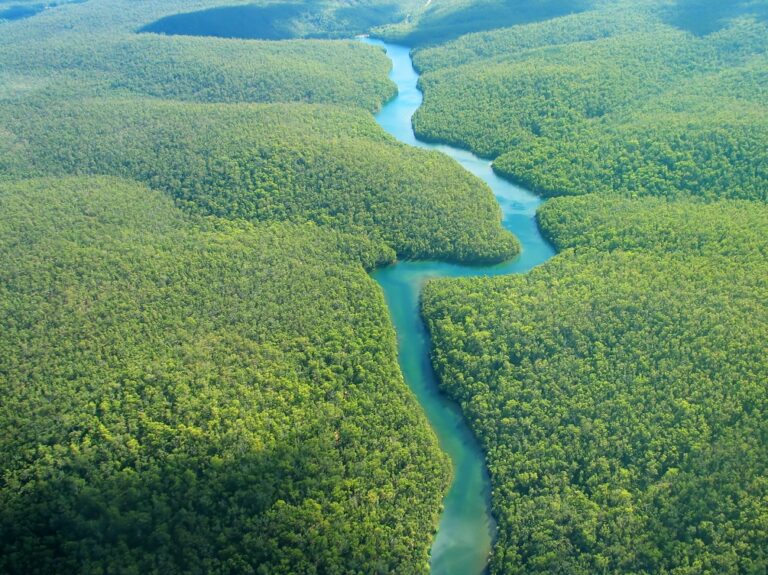

I'm wondering if camping in the Amazon forest and staying a night there is worth it. I'm also looking for ways to visit and spend the night in the Amazon forest. We are a group of ten people and are super eager to see at least what spending a night at the Amazon Forest looks like.

